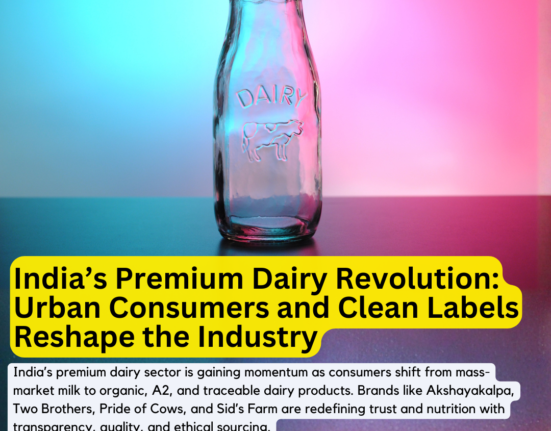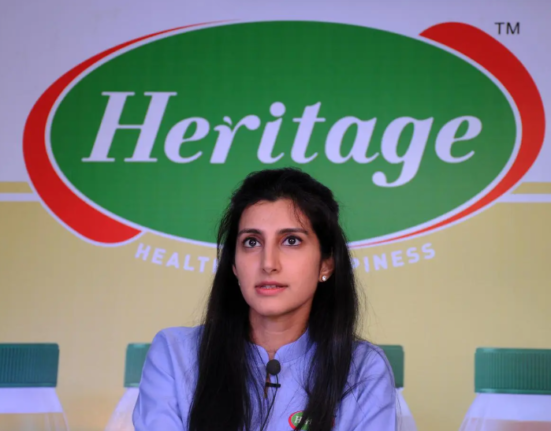The US is set to ban red dye No. 3, prompting food manufacturers to innovate with natural alternatives to meet regulatory requirements and consumer preferences. Known for its bright pink and cherry-red hues, red dye No. 3 has been a controversial synthetic additive. While the ban presents immediate challenges for companies yet to reformulate, it also allows brands to modernize their ingredient lists and align with growing consumer demand for clean-label products.
Industry experts believe this is a pivotal moment for food colour regulation. Leaders in the colour industry highlighted the growing role of nature-based alternatives. They predicted further scrutiny of synthetic food additives, which could lead to more bans and stricter regulations in the future.
“This is a major milestone for food colour regulation and a wake-up call for F&B manufacturers to rethink their use of synthetic ingredients,” says Alice Lee, Technical Marketing Manager at GNT USA. “Switching to natural alternatives will be challenging in the short term, but it allows brands to evolve in line with consumer expectations and regulatory changes.”
Industry Response to Regulatory Shifts
Although the FDA is currently focused on banning red dye No. 3, other synthetic colours could face similar restrictions. For instance, California banned red dye No. 3 in October 2023 and plans to prohibit additional synthetic colors—Blue 1, Blue 2, Green 3, Red 40, Yellow 5, and Yellow 6—in K-12 school food programs by 2028.
“This could encourage other states to follow suit, leading to more state-level restrictions,” explains Lee. “Brands that delay adopting risk regulatory roadblocks and losing market share to competitors who proactively adopt natural alternatives.”
GNT’s Exberry line of natural colour concentrates offers a variety of red shades derived from anthocyanin pigments in black carrot, sweet potato, blackcurrant, and radish. However, Lee notes that these natural colours perform best in low-pH environments, requiring adjustments for use in neutral or alkaline formulations.
“Our beetroot concentrates, which contain betanin pigments, are pH-stable but sensitive to heat, necessitating higher dosages and additional stability measures during processing,” she says. “Blending different natural colors, such as reds and yellows, can help brands achieve desired hues while optimizing performance and cost. These options also offer the advantage of being labeled simply as ‘carrot juice for color’ or ‘fruit and vegetable juice for color,’ aligning with clean-label trends.”
Consumer Preferences Drive the Shift
Elaine Lee, Applications Manager at Lycored, emphasizes that regulatory pressure isn’t the only factor driving the move toward natural colors. Consumer demand for wholesome, clean-label products free of synthetic additives is a major influence.
“Consumers are increasingly vocal about their preference for natural, nature-derived ingredients,” says Lee. “This shift away from synthetic colors is expected to continue, as more manufacturers respond to both policy changes and market demands.”
However, some manufacturers remain hesitant to transition to natural colors due to concerns over stability, shelf life, and cost. “Source origin is also critical,” she adds. “For example, carmine—a commonly used natural red color—is not vegan-friendly, which can deter consumers. These challenges require innovative solutions to address the wide range of applications where natural colors are needed.”
Lycored has developed stable, label-friendly natural color solutions designed to perform in demanding conditions like UHT-flavored milks that undergo high-temperature processing. “Our lycopene-based shades, derived from non-GMO tomatoes, are vegan, stable, and ideal for replacing synthetic colors like red dye No. 3,” explains Lee.
“These solutions are not only technically robust but also allow brands to achieve clean-label status, as lycopene can be simply labeled as ‘lycopene from red tomatoes,’” she adds. “This is particularly appealing to health-conscious consumers seeking transparency in their food products.”
Natural Colors and Future Bans
Katie Rountree, Regional Product Manager at Givaudan Sense Colour, highlights the potential for additional bans on synthetic dyes in states like Pennsylvania, which is considering restrictions on yellow, blue, and green colors.
“The red dye No. 3 ban started at the state level before being adopted nationwide, so it wouldn’t be surprising if other synthetic colors follow a similar path,” she says.
Rountree notes that companies relying on red dye No. 3 will need to reformulate within two years, either by adopting natural alternatives or transitioning to other synthetic dyes still allowed. “Switching to natural colors offers more than compliance—it enhances labels and increases consumer trust,” she adds.
However, replacing synthetic colors is not a straightforward process. “Synthetic dyes are often blended to create specific hues and brand identities,” Rountree explains. “For red dye No. 3, natural alternatives include carmine, Vegebrite purple sweet potato, and Endure beet, which offers improved heat stability compared to traditional beet. For orangey-red shades like those of Red 40, options include anthocyanins derived from black carrot, radish, and Vegebrite Amaize Orange-red.”
A Turning Point for Food Colors
The US ban on red dye No. 3 marks a significant shift in the food industry, pushing manufacturers toward natural, sustainable alternatives. This change not only ensures compliance with evolving regulations but also aligns with modern consumer expectations for transparency, health, and clean-label products.
By innovating with nature-based colors, brands can stay ahead of future regulatory changes while catering to growing consumer demand for high-quality, natural ingredients. The transition away from synthetic dyes represents an opportunity for companies to future-proof their products and build stronger connections with consumers seeking healthier, more transparent food options.







